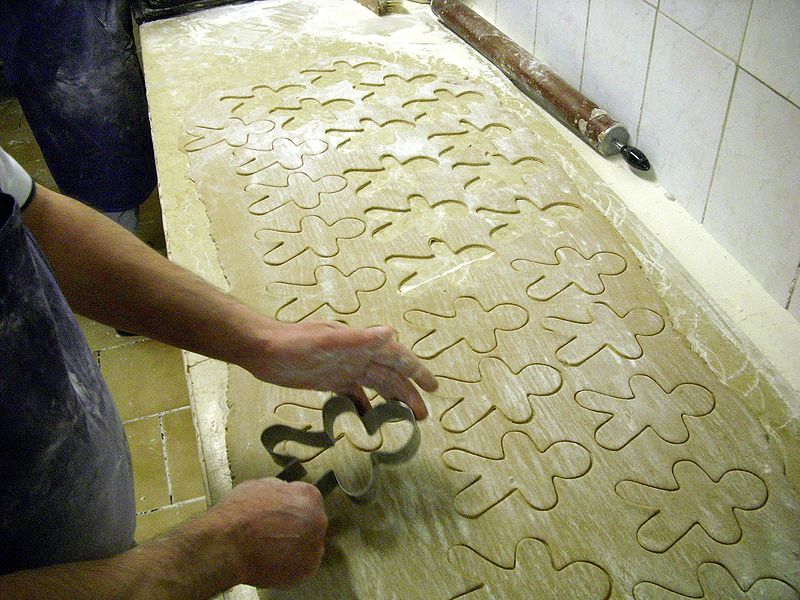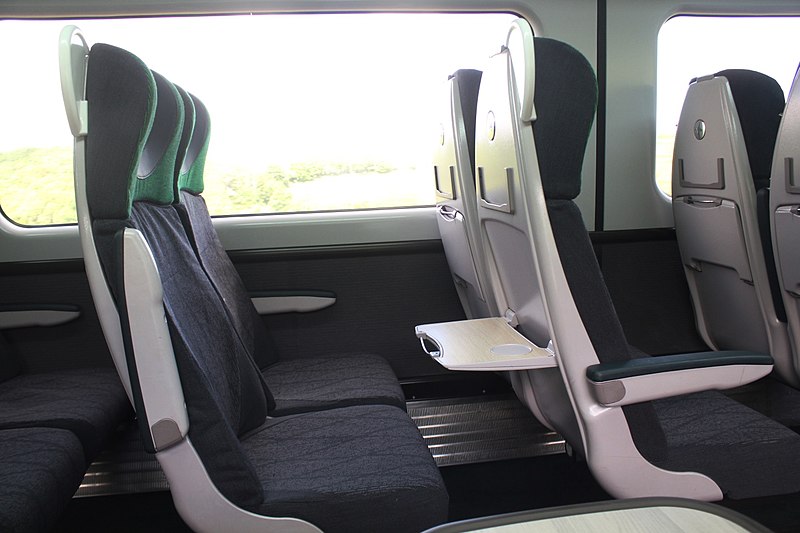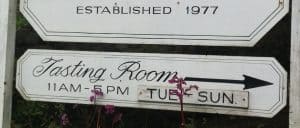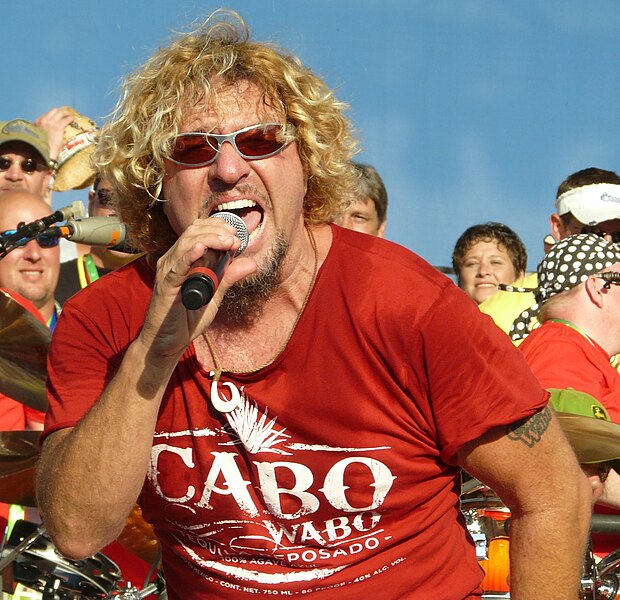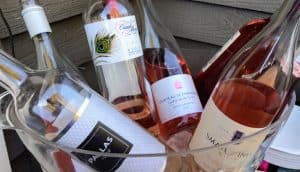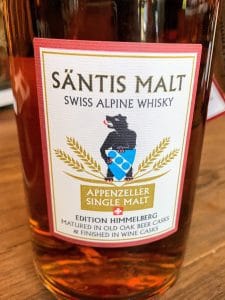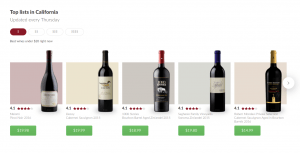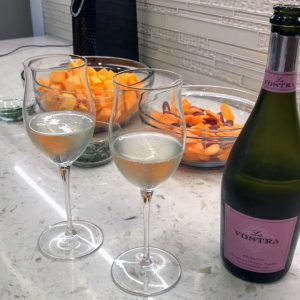Earlier this month, the Drinks Insight Network published their top ten influential wine experts in the beverage industry. They highlighted 10 Twitter accounts with 17,000-245,000 followers and a ranking of at least 54 on GlobalData’s “influencer score”.

Yes, that is Kevin Bacon.
I follow all these accounts on Twitter and it’s not a bad recommendation to check them out. But I only actively interact and read 2-3 of them–Jamie Goode (@jamiegoode), Robert Joseph (@robertjoseph) and Ken Alawine (@alawine). I follow Goode and Joseph for their engaging dialogue about wine topics while Alawine’s feed is a nice diversion of fun memes and infographics.
I don’t think I’ve ever been influenced to buy a wine mentioned by any of them.
And I’m an active social media user who is already motivated to seek out wine stuff.
If I’m so minorly influenced by the most prominent influencers, then what kind of influence do these folks (as well as other influencers/bloggers) really have on the typical wine consumer?
Do You Want The Brutal Truth?
Very little.
I know this post is not going to make me friends among my fellow bloggers or “influencers”. But I can’t forget about my past life before I really started blogging. In addition to several years working wine retail, I studied winemaking at the Northwest Wine Academy with thoughts of one day opening up my own winery.
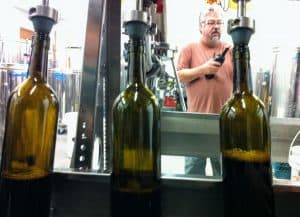
One of my favorite photos from winemaking school. Featured here is my mentor, Peter Bos.
While I’ve moved on from that goal, I still have many friends who work at or own wineries in the Pacific Northwest. When I talk to them about my experiences working in the trenches selling wines like theirs, I’m not going to bullshit them.
I know how tough it is for a small winery to compete in a saturated market. With time and money scarce, I’m not going to encourage my friends to waste either chasing the favor of “influencers”–especially if it’s not really going to help them sell wine.
Yeah, this is a self-defeating post for a blogger to write. Oh well. But I will share with you the same advice I give my winemaker friends. While this is, of course, anecdotal, it’s drawn from my years of helping tens of thousands of consumers while working as a wine steward at a major grocery store chain and a big-box retailer.
It’s also the advice that I would put into practice myself if I started my own winery. There are real influencers out there that drive people to a store looking for wines. But few of them would rank an “influencer score”.
The #1 Influencer — Friends and Family
In over seven years working on the floor, I’ve never had a customer come in with a blog post, Instagram or tweet on their phone looking for a wine. Again, anecdotal, but that is the stark truth.
However, every single day I would have multiple customers come in looking for a wine that a friend or family member recommended to them. These personal recommendations are, by far, the most valuable currency in the industry—and not just in wine.
Of course, friends and family are on Facebook, Twitter and Instagram. You can consider some social media influence from outside sources. But the reach of a blogger or “influencer” is going to be indirect and weaken with each link away from that personal connection.
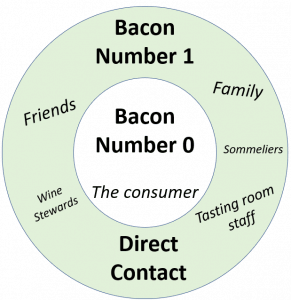
A Few Good Men and some Sleepers
Essentially if we want to “Kevin Bacon” this, your best influencers are going to be the folks with a Bacon number of 1. When you start getting 2 steps or more removed from the consumer, the amount of influence dwindles considerably.
Advice for Wineries
Remember, keep your eye on the Bacon.
Personal recommendations from friends and family are more valuable than 90+ points from a famous critic. Wineries should seek these recommendations out every bit as aggressively as they court a high score.
Many wineries allow wine club members to bring guests to the tasting room for free. But I can’t think of many who do “friends and family” wine club events. Most events allow their members to bring only a single guest who is usually going to be a spouse.
How does that help you grow your clientele list? Think about expanding that allowance to 3-4 guests as well as promotions that reward current customers for referrals.
#2 Restaurant By-The-Glass Programs
While Millennials tend to be more adventurous than previous generations, there is always a risk in accepting a recommendation. For many, the risk of paying $7-20 for a glass pour of wine at a restaurant is more appealing than spending $25+ for a full bottle at a store.
After personal recommendations from friends and family, the second biggest driver of consumers to my wine shops was the desire to find something they had at a restaurant. Once in a while, a customer would be seeking something they ordered a bottle of but the vast majority of the time it was something they had from the BTG list.
Advice for Wineries

There is a reason why the big mega-corps focus so heavily on their on-premise accounts.
Getting on restaurant wine lists should always be a priority for small wineries. In many ways, it is the perfect setting for people to have their first experience with your wine–with great food and great company.
Placement on the BTG list is even more valuable than being on the general wine list. The intimidation factor is less while the openness to explore is greater. Of course, well-run programs will have talented sommeliers that can hand sell the entire list. However, there are very few consumers (like me) who indulge in things like playing the Somm Game.
Plus, for those consumers who are open to recommendations, the odds are better for your wine getting a BTG recommendation from the sommelier than getting one of your bottles recommended from the full list. Think about it. You’re competing against a dozen or so options by-the-glass versus potentially hundreds of bottle options.
I know competition for placement in these programs is high and brings a lot of challenges. But I firmly believe that the effort pays more dividends than chasing online influencers.
#3 First-Hand Winery Experience
While the influencers above drove more people to my shops, this is the area where wineries most control their destinies. Of course, the quality of your wine should be of paramount importance but second only to that should be the type of experience guests get in your tasting rooms.
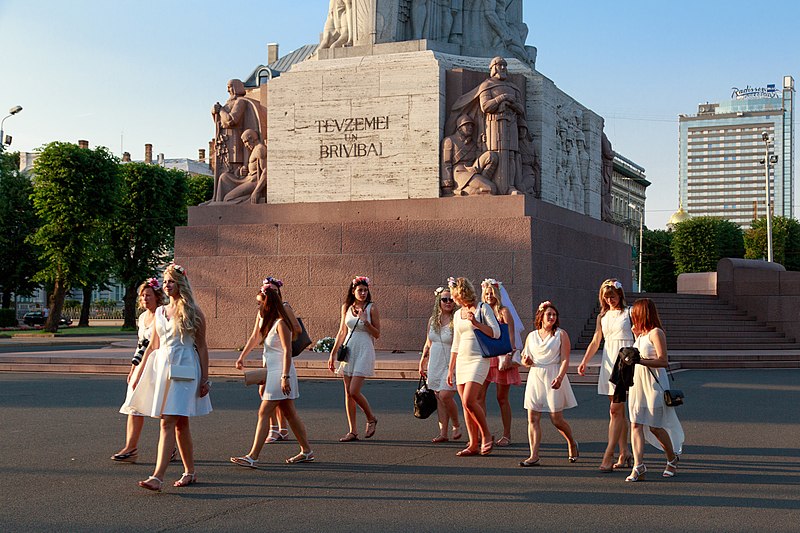
I know the sight of a “Bridesmaid Brigade” fills tasting rooms with dread. But they are all prospective customers, even if they don’t buy jack on that first visit.
Living so close to Woodinville Wine Country and within driving distance of all the major wine regions in the Pacific Northwest, I’ve seen the best and worst of tasting room experiences. I’ve also heard on the floor, from consumers, the best and worst as well.
The best experiences give people a reason to be excited about a winery. Often people visit 2-4 wineries on a trip, so the goal should be to stand out positively. Every tasting room is going to be pouring wine. That’s old hat. The memorable wineries are the ones that give their guests something more than just booze.
Advice for Wineries
I can not emphasize enough the importance of making sure you have a great staff working your tasting rooms. Pay the good ones well and work like hell to retain that talent. They are truly the difference between bringing home the bacon or burning it to a crisp.
I can’t count how many times I recommended a wine only to have a customer recount a bad tasting room experience that they (or friends and family) had. Even if it was several years ago when the winery was owned by someone else, it was a non-starter.
If I started a winery, I would take this Maya Angelou quote and frame it in my tasting room.
I’ve learned that people will forget what you said, people will forget what you did, but people will never forget how you made them feel. — Maya Angelou
#4 Published Media “Best of…” lists and Wine Competition Awards
My last retail holiday season was 2017 but I remember it quite well. This is when all the “Top Wines of the Year” and “Best of….” lists come out. It seems like every newspaper and magazine publishes some year-end compendium.
For retailers, these lists are both blessings and a royal pain in the ass. They’re easy sales because consumers come in ready to buy and you can fill their basket in 3 to 5 minutes—that is, if you happen to have the exact wine and vintages. The pain in the ass comes from nearly all these lists featuring wines of limited availability (sometimes even winery-only) or from a vintage long sold out.
Advice for Wineries

Customers coming into a wine shop with an actual print copy of a wine magazine is becoming rarer and rarer.
I ranked this one #4 but it could have easily been #5. The influence of traditional print media is certainly fading. When I first got into retail, I would almost weekly have customers coming in with the latest copy of Wine Spectator or the local newspaper critic’s column. Now it seems mostly concentrated on these year-end lists.
I’ve also noticed that the clientele that actively uses these lists skew older as well. Again, only anecdotal, but I suspect that the influence of these media sources will only continue to wane with the growing prominence of Millennials and Generation Z in the market.
Likewise, I see less excitement and influence surrounding wine competitions every year. But there is still some fight in the old girl. Personally, I don’t think they should have much any influence but people like shiny things. Wine competitions dish out lots and lots of shiny things.
For my own winery, I would still be entering competitions and sending samples out to the traditional print media. However, I wouldn’t put all my eggs in these baskets and focus more on the top #1-3 influencers above.
But you ultimately can’t discount the easy sales that a winery can get with prominent list placement. Nor can you downplay the influence that even a silly bronze medal sticker has in making a wine stand out on the shelf.
#5 Wine Apps
Wine apps with Yelp-like rating systems are another thing that I think shouldn’t hold much influence–but they do. As I described in my post Naked and Foolish, I think these apps are incredibly gameable and ripe for misuse.
My apprehensions aside, I realize that wine consumers (particularly the younger set) are downloading and using them. It’s not yet a considerable quantity, hence my #5 ranking, but it is growing. Before I left retail, I would see maybe a handful of customers a week whipping out their phones and scanning bottles to see how many “stars” something got. I can only expect that number to increase.
Advice for Wineries
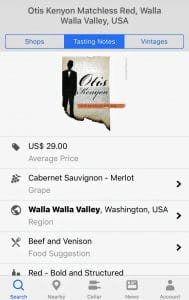
While not necessarily a rating app itself, I often saw consumers on the floor using WineSearcher to check prices and critic scores.
While I doubt that wine apps would ever supplant the top 3 influencers, it is nonetheless a Bacon number 1 influencer that shouldn’t be ignored.
At the very least, I would recommend that wineries download these apps and pay attention to what scores their wines are getting from consumers. For small wineries that aren’t likely to get many inputs, it is probably not a bad idea to upload nice pictures of your labels. That way when someone is searching for your wines they can find them more easily.
I would avoid the temptation to add your own ratings and take part in the easy gaming of these apps. But that’s just me.
#?? Recommendations of Wine Stewards/Sommeliers
As a steward on the floor with face-to-face contact with consumers, I carried a Bacon number of 1. But how influential I truly was depended on a lot of factors. This makes it difficult to give a blanket ranking on how influential stewards (and in the same vein, sommeliers) really are.
For customers that I interacted with often and built a relationship, my influence would be only behind that of the #1 influencer–family and friends. I earned trust by learning their palates and backing up my recommendations with my knowledge.
But more broadly, my influence probably fell in the #3-5 range depending on the consumer’s personality (i.e. willingness to seek out a recommendation) as well as their past experiences with other stewards and wine shops. It’s very easy for a consumer to feel burned by a bad recommendation that they received one time, from one person, and then be skeptical about any recommendations they get–from anyone.
The hiring prowess and training programs of a wine shop/restaurant have an immeasurable impact on how influential their stewards and somms will be.
Advice for Wineries
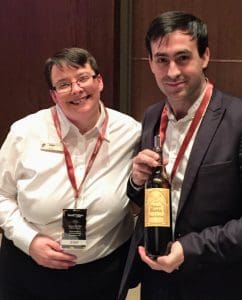
A pic from my retail days where I had a chance to meet Jean Triaud, the grandson of Ch. Gloria’s founder Henri Martin.
Trying the wine was nice, but I was able to introduce many more consumers to Ch. Gloria’s wines through the stories and insights that Jean shared.
After family and friends, wine stewards and sommeliers have the potential to be the second most potent influencer selling your wine. I would give the nod to a winery’s own tasting room staff vis-à-vis, but when you add up how many people visit your tasting room versus the numbers that visit wine shops and restaurants, the potential is higher with the latter.
It is undoubtedly in a winery’s best interests to influence these influencers. These are the folks that are in the trenches presenting your wine to consumers. They have the potential to move far more cases of your wine than a blogger like me ever will.
But it is not just about getting wine stewards and sommeliers to try your wines. Keep in mind that they’re likely getting samples, trips and other perks from dozens upon dozens of other wineries.
You need to sell them on what makes your winery unique and distinctive, just like you do to a consumer face-to-face. Successful wineries reach out to wine stewards and sommeliers and give them tools (great stories, behind-the-scenes insights, etc.) that they can share to the thousands of consumers they interact with yearly.
I’m not saying that bloggers and social media influencers have zero influence, though.
I don’t want to come across as slamming my fellow bloggers or denigrating their efforts. I know we’re all working hard to make original and useful content that people will want to read. Believe me; I feel the same flutter of excitement and gratification looking at page views and subscription numbers as you do.
But the truth is, is that we are, at best, Bacon number 2s when it comes to the true reach of our influence. We have some influence, but it is quite limited.
We can contribute content that shows up on Google searches when an already engaged and intrigued consumer looks for more info on a wine. Indeed, this is the area where we probably exert the most influence which is why creating original and compelling content is critical.
But that audience of actively engaged consumers is still relatively small. And those prospective consumers needs to be initially “engaged” by something else before they start searching–often by things in the Bacon number 1 realm like sommeliers and wine stewards.

Engage bacon is by far the most influential bacon.
Now bloggers and social media influencers can certainly influence those sommeliers and wine stewards. Stepping back and thinking about my retail days, I most certainly read blogs and got intrigued by wines.
However, when I step back further and look at the blogging and “wine influencer” scene–when I look at what I’m doing–I realize that we are mostly just influencing ourselves.
Spend any amount of time scanning the comments and likes on Instagram of notable wine influencers and you start seeing a pattern.
It’s the same people talking to each other.
Now, truthfully, that is great because this is a community that abounds with terrific friendships. One of the most edifying results of attending the Wine Bloggers Conference was meeting fellow bloggers that I could geek out with.
But we can’t mistake shared passion for influence.
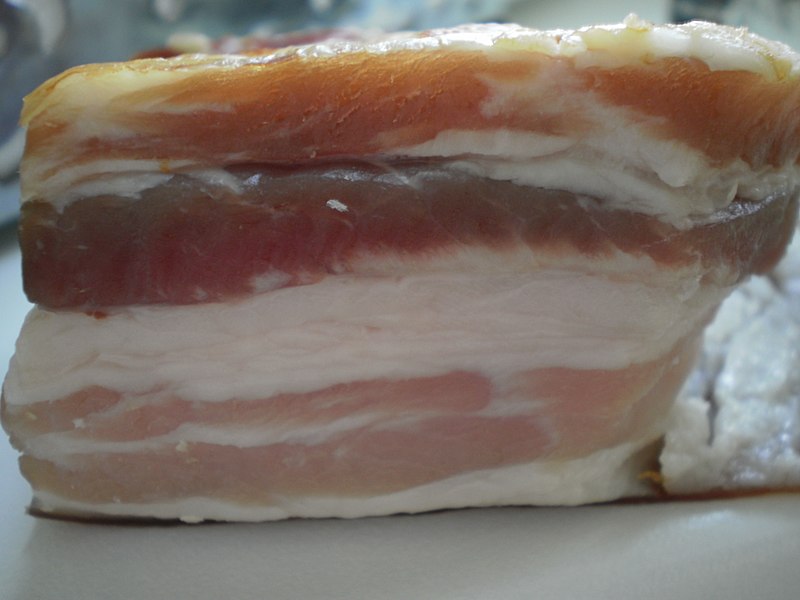
Non-engaged bacon.
This is how I view my blog posts. They’re an ingredient that needs to be “cooked” before its sweet aroma influences anyone.
Wineries that invest hundreds, if not thousands, of dollars sending out samples to influencers are not getting their money’s worth. Especially compared to the return on investment they could get focusing on the Top 3 influencers I noted above.
Preaching to the choir will never bring people off the streets and into the pews. And getting people off the streets to check out wines is the whole point of marketing. It’s what wineries need to do in order to survive.
That is why when my good friends with wineries approach me about sampling their wines for review, I’ll accept them–but I’m not going to mislead them about my “influence.” I know that there are better ways that they could be spending their time and money.
And sharing that might be my real influence.



